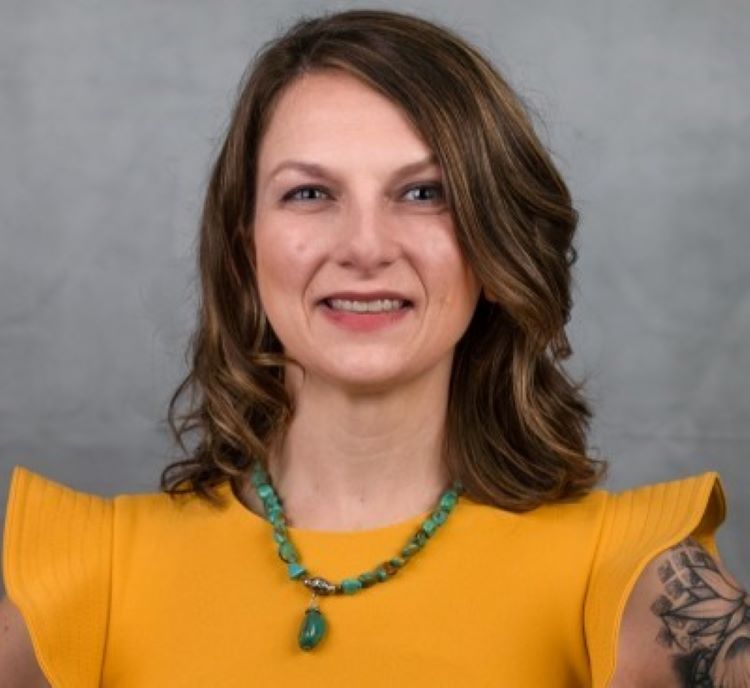

Cecelia Koetting, OD, FAAO DipABO, of the University of Colorado School of Medicine, specializes in neuro-optometry, anterior segment and ocular surface disease, “but I’m still seeing patients’ retinas,” she says. So, when she is concerned about patients developing early signs of age-related macular degeneration (AMD) or geographic atrophy (GA), she starts a protocol for watching that patient.
Even though this is not the primary reason she sees patients, with recent GA therapy approvals, it’s essential to do something. “We can’t not tell the patient that they have GA. I say, ‘We might have a treatment for this. I’m going to refer you to a retina specialist who will determine whether it’s more appropriate to treat or monitor you at this time.’ It’s as simple as that,” she says. The primary care optometrist can provide an overview of the disease and treatment options, but the retina specialist will be the one who has the in-depth conversation with the patient.
IMAGING IS KEY
Dr. Koetting wants good images to get the best information she can for a complete clinical picture. For any patient with a retina concern that she sees during fundus photography, she’ll order an optical coherence tomography (OCT) image. OCTs can show zones of attenuation or disruption of the retinal pigment epithelium (RPE), presence of choroidal hypertransmission or evidence of overlying photoreceptor degeneration.
She’ll also try to get fundus autofluorescence (FAF) images, which can be helpful for assessing the lesion size and monitoring disease progression. “The FAF can document small changes not seen by the naked eye,” she says. She’ll look for areas of hypofluorescence with sharply demarcated borders or patterns of hyperfluorescence surrounding atrophic lesions. (Read about an imaging guide that Iveric Bio created.)
TREATMENT AVAILABILITY CHANGES EVERYTHING
Prior to the approval by the U.S. Food and Drug Administration of therapies that can help slow the progression of GA, there was not much that eye care professionals could do. As an optometrist, it was frustrating to tell patients, “You have this condition, but there’s not much we can do.” Now, Dr. Koetting tells them, “We might have a treatment.’ It’s a short conversation. It takes me longer to explain how to use an Amsler grid,” she says.
She will tell patients that in addition to a retina referral, there are steps that they can take in terms of lifestyle, supplements and regular home and in-office monitoring. “We do not have to wait for the patient to develop vision loss before a referral; we can refer for consultation earlier. Even if the retina specialist and I decide to monitor, that patient will at least have established a relationship with the specialist if the time comes for additional treatment.”
With the August approval of IZERVAY™ (avacincaptad pegol intravitreal solution) for the treatment of GA secondary to AMD, it becomes essential that primary care ODs learn more about it. She encourages ODs to learn more about interpreting images and looking for warning signs of progression to and in severity of GA. More education is becoming available on this topic, too.
She also stresses the importance of creating relationships with retina specialists if optometrists don’t have those already. “Don’t overthink this. Make the referrals, and you’ll start to see notes coming back from the retina specialist and learn from those,” she says. It’s helpful to remember that these treatments are new to retina specialists, too.
GIVING PATIENTS HOPE
Most patients do not fully understand AMD or GA. But they may know someone who has lost sight due the conditions, and it’s a frightening diagnosis. Dr. Koetting says that optometrists can play a key role in letting the patient have some hope – without promising a cure, of course. “You have to manage the expectations, but it’s fine to say that you are referring a patient because there might be a therapy now that could prolong the patient’s quality of vision and quality of life. Beyond that, it’s up to the retina specialist because we as ODs do not dictate how the specialist chooses who gets the treatment or how the patient will respond,” she says.
As more of these conversations take place, optometrists will gain confidence. Look for warning signs such as macular RPE clumping or soft congruent drusen. “Making the referral is the key thing. If you have an OCT or retinal camera with FAF capability, beautiful. But if you don’t, consider a lateral referral to an OD who can do OCT and/or FAF in your area,” she says.
GA impacts an estimated 1.5 million people in the U.S., so if all optometrists begin looking for it, many of these cases could be detected earlier., she says. “We are traditionally the gatekeepers for patients’ eye health. It excites me that we can identify the condition and send patients for intervention earlier. It could make a huge different in the rest of their lives.”
Read other stories about how ODs are detecting and talking with patients about GA here.
This content is independent editorial sponsored by Astellas. Astellas had no input in the development of this content. Astellas, formerly Iveric Bio.



